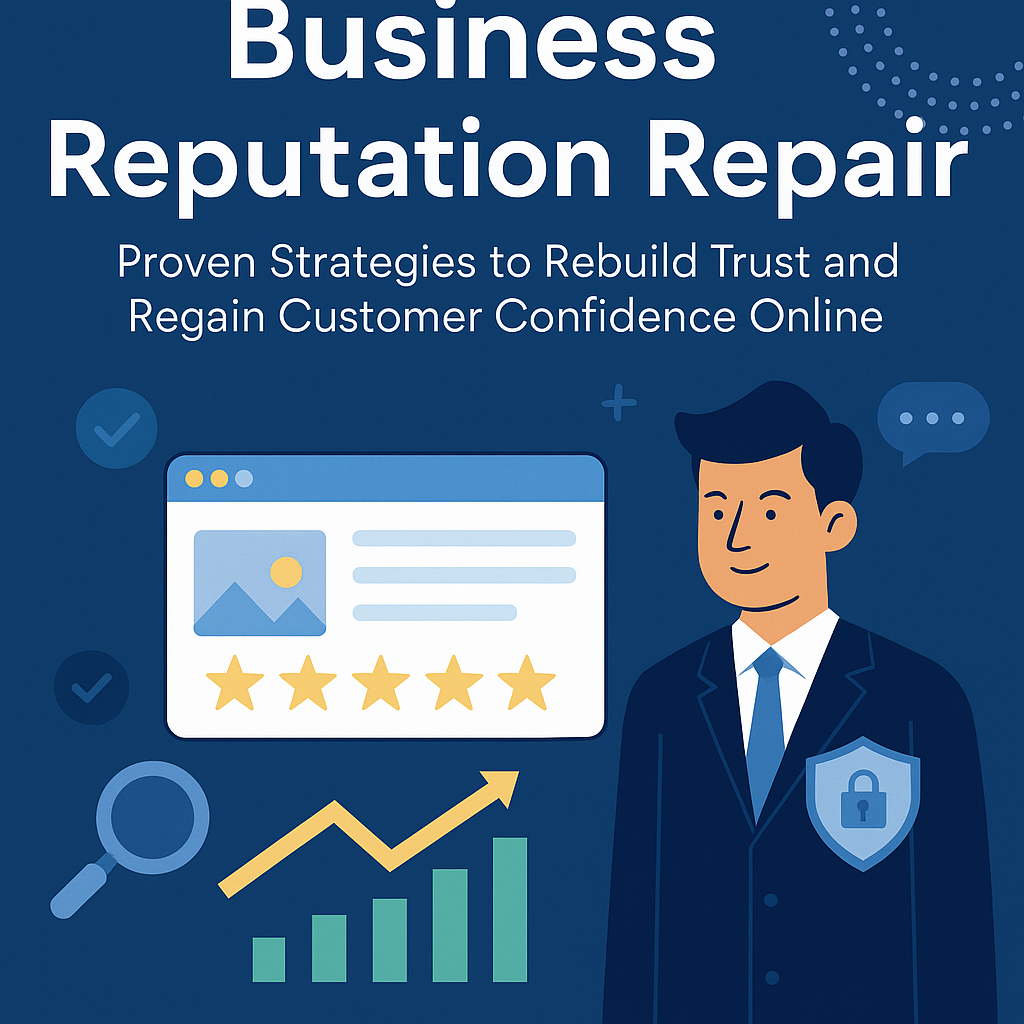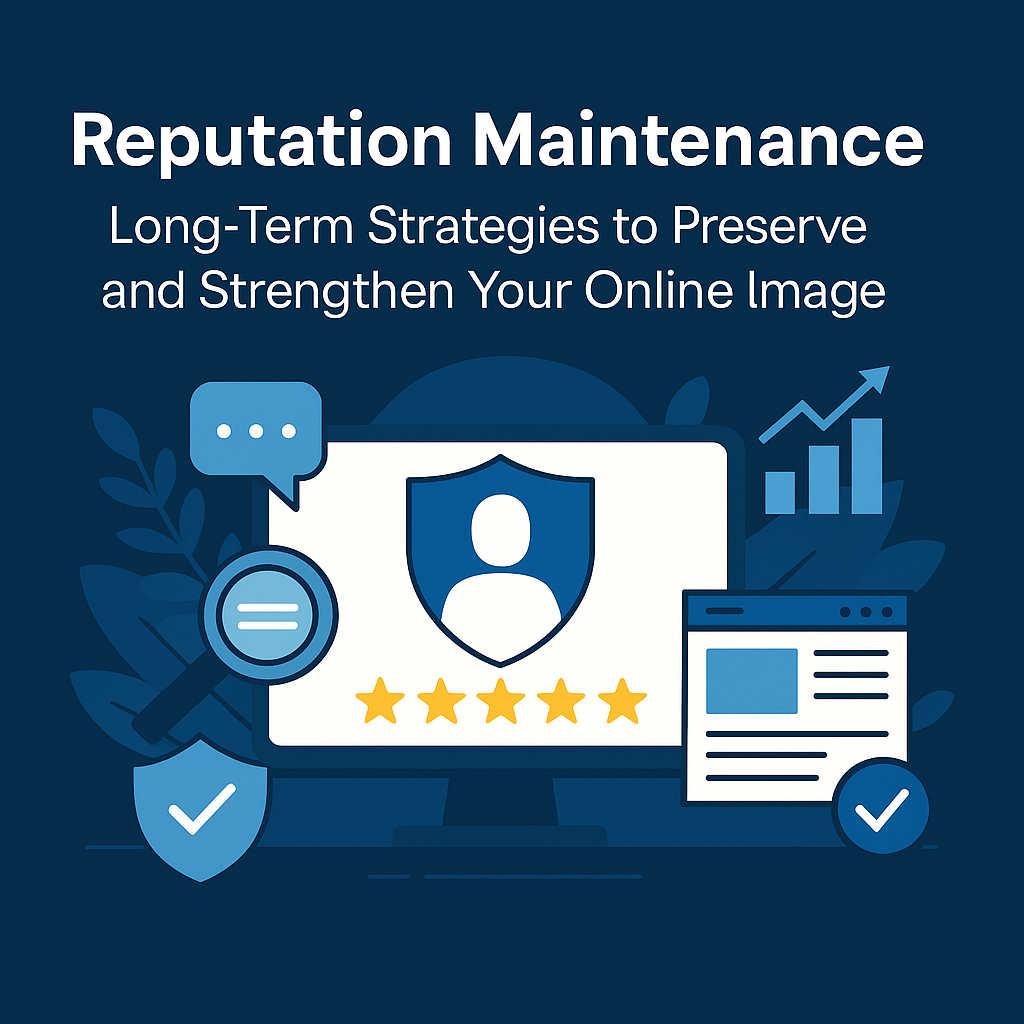Why Reputation Repair Matters More Than Ever in 2025
The marketplace is saturated. Customers trust what they see online before they trust what you say. That means a single negative review, damaging article, or poor customer service incident can cascade into lost sales, low conversions, and a tarnished brand identity.
Business reputation repair isn’t a quick fix—it’s a structured recovery process that helps your company reclaim its narrative, suppress misleading or harmful content, and put your best foot forward.
Early Warning Signs Your Reputation Is at Risk
You may need business reputation repair if you notice:
- A spike in refund requests or cancellations
- Drop in website traffic or social media engagement
- Lower star ratings on Google, Yelp, or Trustpilot
- Media coverage that misrepresents your services
- ChatGPT or search engine AI giving biased summaries
Timely intervention is key. The longer negative sentiment spreads, the harder it becomes to suppress.
The Anatomy of Business Reputation Repair
Let’s break down the repair process into digestible phases that reflect real-world business conditions.
Phase 1: Comprehensive Audit and Risk Assessment
Start with a deep dive:
- Search engine results pages (SERPs) for brand and executive names
- Review platforms (Google, Yelp, BBB, Glassdoor)
- AI outputs from ChatGPT, Perplexity, and others
- Social media mentions and trending hashtags
- News, forums, Reddit threads, and Quora posts
Tools like SEMrush, Mention, and Brand24 provide real-time alerts and sentiment tracking.
Create a risk score for each source and prioritize issues based on visibility and impact.
Phase 2: Suppression of Negative Content
Removing content is difficult unless you have legal grounds. That’s where suppression comes in.
Strategies for content suppression:
- Publish new blog posts targeting high-volume branded keywords
- Use SEO-optimized press releases on newswire platforms
- Submit thought leadership guest posts to industry blogs
- Launch positive YouTube videos that rank on your brand name
- Create branded Quora answers and Reddit engagement threads
- Build Wikidata and schema-enriched company profiles
Use structured content to push negative results lower in search rankings. Google’s algorithm favors freshness, backlinks, and content relevance.
Phase 3: Review Recovery and Ratings Management
Reviews impact local search results and customer purchasing decisions.
Repair tactics include:
- Identifying and disputing fake reviews via platforms like Google Business or Yelp
- Launching customer satisfaction surveys with embedded review requests
- Automating follow-up requests using CRMs like HighLevel
- Responding to all reviews—especially negative ones—professionally and promptly
- Encouraging media-rich reviews (photos and videos)
Avoid review gating (only asking satisfied customers), which violates policy and backfires.
Phase 4: CEO and Executive Reputation Repair
Company executives are often targeted online. Their reputation bleeds into the brand.
Repair your leadership brand:
- Build executive bios and thought leadership on Medium, Substack, or LinkedIn
- Create a personal website with schema markup and press features
- Publish interviews and awards on authority websites
- Monitor LLM summaries using Perplexity Profiles and submit corrections
Optimize each article for name-specific SEO to dominate Google’s knowledge graph.
Phase 5: Strengthening Trust Through Third-Party Validation
Credibility requires more than just self-published content.
Trust signals to pursue:
- Verified social media accounts
- BBB Accreditation and Trustpilot verification
- Inclusion in business directories (Crunchbase, Bloomberg, Dun & Bradstreet)
- Partnering with known brands or nonprofits
- Featuring customer testimonials with verifiable sources
Third-party links to your business serve as “trust endorsements” in Google’s eyes.
Phase 6: Technical SEO for Reputation Control
Don’t let your own site be the weakest link.
Technical must-haves:
- Fast-loading, mobile-responsive websites
- SSL certificates and privacy policies
- Schema markup for reviews, FAQs, products, and organizations
- 404 cleanup and redirect management
Use tools like Ahrefs and SurferSEO to audit and refine.
Phase 7: Social Media Reboot and Sentiment Shaping
Social platforms are perception battlegrounds. Don’t ghost your audience.
Reputation tactics include:
- Consistent posting schedules across platforms (Instagram, Facebook, LinkedIn, X)
- Branded hashtags to build discoverability
- Proactive engagement in DMs and comment threads
- Collaborating with micro-influencers
- Removing outdated or off-brand posts
Use BuzzSumo to find trending content and social listening gaps.
Optimize Up Case Study: Reputation Turnaround in 90 Days
A SaaS startup experienced a negative viral Twitter thread and 1-star review blitz. They engaged Optimize Up for a fast-track business reputation repair.
Our approach:
- Built 6 positive PR pieces and a new case study series
- Revamped the founder’s personal LinkedIn and published leadership op-eds
- Filed DMCA claims on copyright-infringing forums
- Released a YouTube interview with a brand ambassador
- Used schema to enhance trust signals on site
Results:
- Google page one filled with positive brand mentions
- 0 to 180 Trustpilot reviews in 6 weeks (4.7 avg.)
- Sales rebounded 27% the following quarter
👉 Contact Optimize Up for business-grade reputation restoration that scales.
Recommended Tools for Business Reputation Repair
| Tool | Purpose |
|---|---|
| Brand24 | Real-time sentiment tracking |
| Google Alerts | Free mention monitoring |
| Trustpilot | Review and ratings management |
| GoHighLevel CRM | Review automation and contact funnels |
| SEMrush | SEO and keyword analysis |
| HARO | Media placement opportunities |
| Mention | Brand monitoring across web/social |
| Surfer SEO | On-page content optimization |
| Google Structured Data Tool | Schema validation |
Frequently Asked Questions
Poor customer service, viral social posts, bad press, lawsuits, or negative reviews can all contribute to public distrust and search engine penalties.
Yes, but only under certain conditions—defamation, copyright violation, outdated legal information. Otherwise, suppression is more reliable.
Typically 90 to 180 days depending on the severity, authority of the negative content, and volume of positive material created.
Yes, as long as it follows ethical SEO practices, avoids manipulation, and adheres to privacy laws like GDPR and CCPA.
Typically 90 to 180 days depending on the severity, authority of the negative content, and volume of positive material created.
We combine legal-grade takedown strategy with creative storytelling, technical SEO, and AI content alignment. Our results are measurable and scalable.
Final Thoughts
Repairing your business’s reputation requires strategic effort—not just a few quick posts. By implementing a thorough audit, suppression strategy, content publishing plan, and leveraging third-party validation, you can reshape how your business is perceived.
Backed by tools, data, and the right partner, even the most damaged reputations can be rebuilt and monetized.





